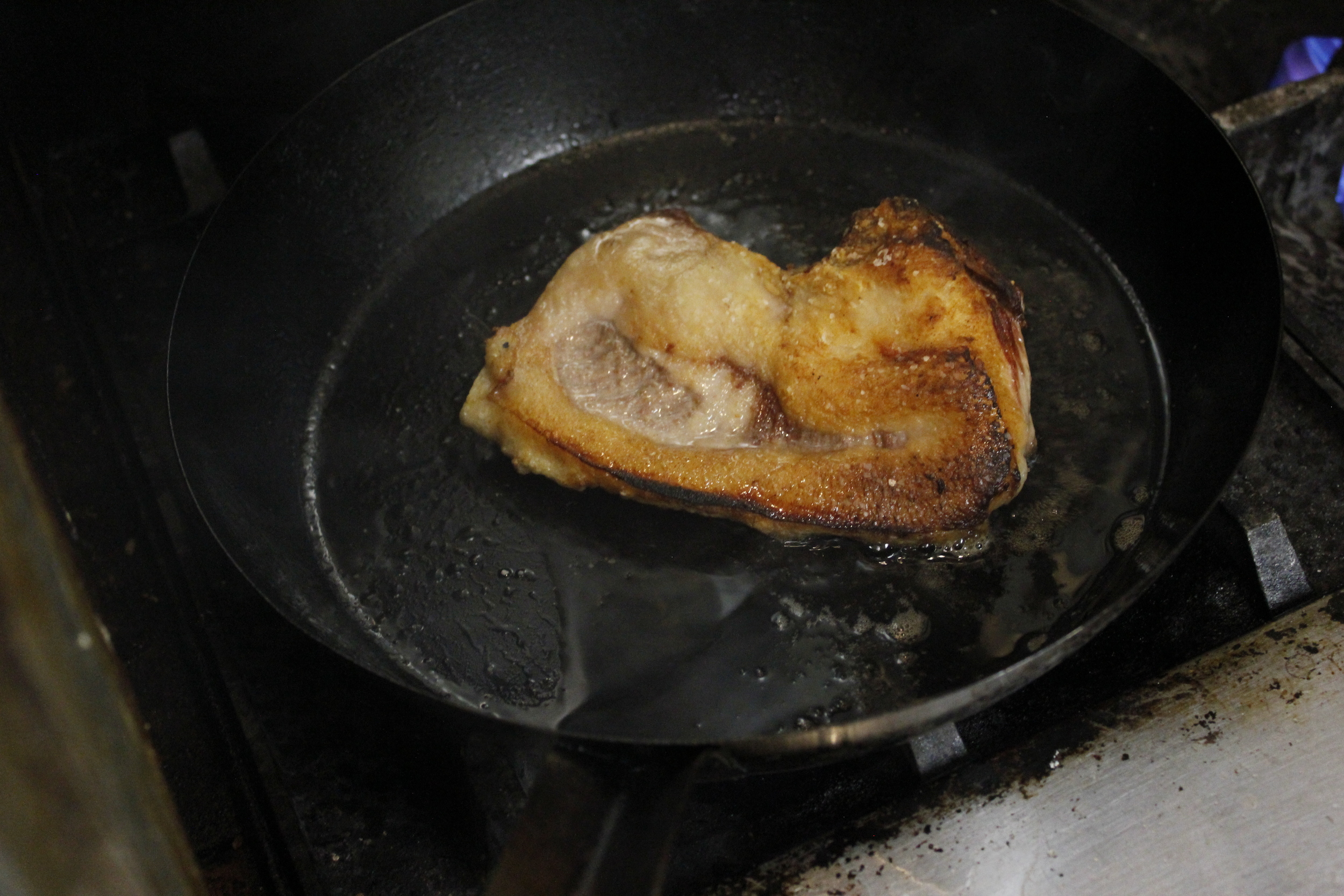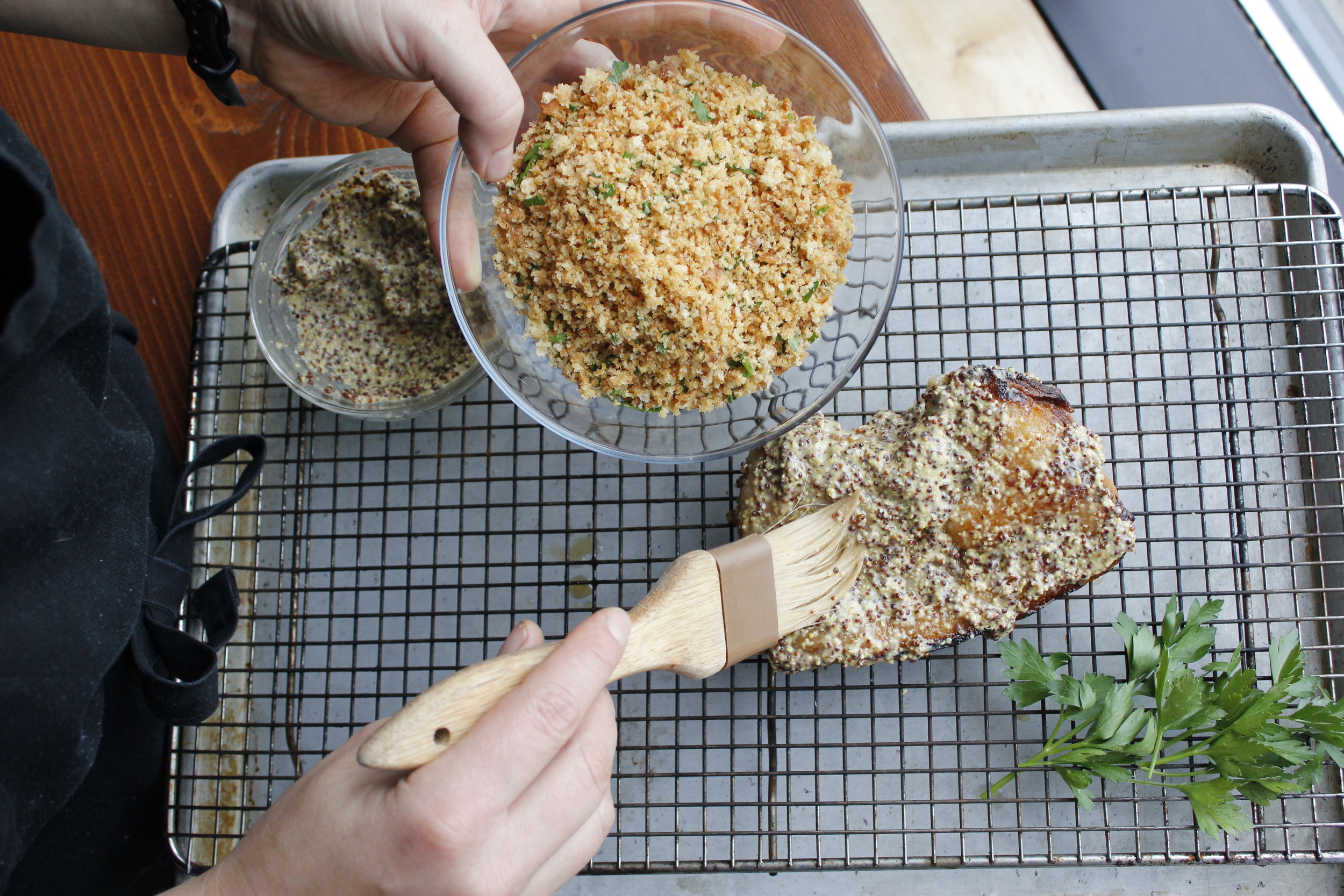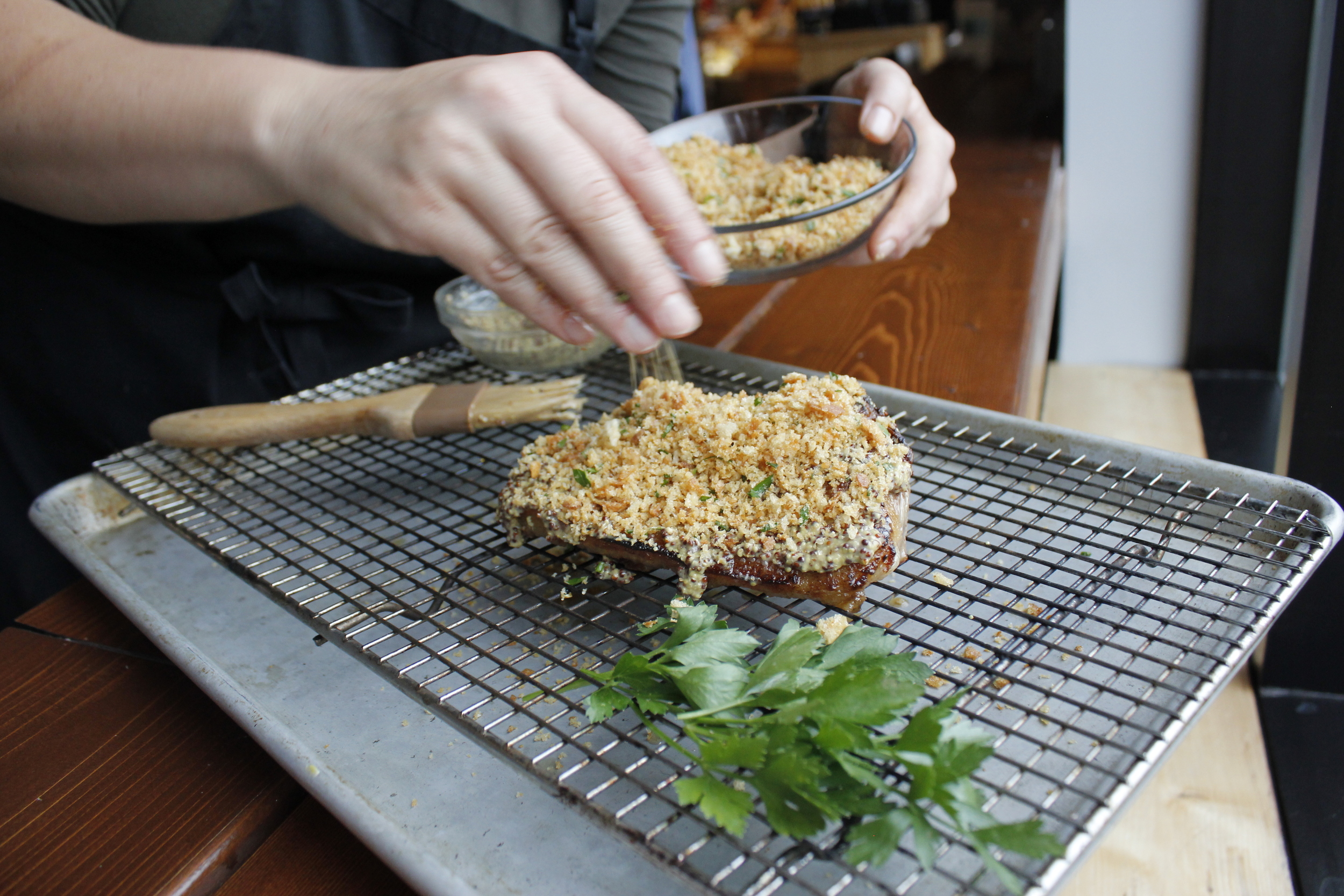***this is a special post written by St Paul Meat Shop manager Nick
As a young adult, I tried to make it work with pork chops. After all, pork chops tend to be inexpensive, and they have a proud culinary history. I fancied myself a competent home cook, but the results with the pork chops that I bought at the grocery store were almost always underwhelming. It wasn’t until I started working at the meat shop that I figured things out.
As a new meat monger, I was unaware that there was more than one type of pig. In grocery stores today, most of the pork comes from the same handful of very lean breeds. There are historical factors at play in why commercial pork has gone the way it has, but it’s worth pointing out that when the USDA grades beef for quality and flavor, it is primarily looking at fat content—the more, the better. And the approach favored by most pork producers is the exact opposite—they are looking for the least fat possible, thus leading to pork’s rather dispiriting contemporary moniker: “the other white meat.”
Given the pork industry’s emphasis on leanness and yield, it’s hardly anyone’s fault that the chops they cook at home might be a little uninspiring. Fortunately, there is a world of delicious, different breeds of pig out there, and a handful of committed, enthusiastic farmers who are raising them—and feeding them the right stuff. We’re very proud to carry pigs from Eric Kreidermacher at Pork and Plants. Eric raises a breed known as the Red Wattle. The amount of fat on these animals is almost obscene, but it tastes like buttered popcorn, and the meat itself is luscious, juicy, steaky. It bears about as much resemblance to the pork I grew up eating as a minute steak does to a ribeye.
Learning about why our pork is special, and starting with a better product, period, was going to make a big difference in how my chops turned out. But I also had some things to learn—or rather, unlearn—about how to cook them. Our lead butcher, Scott Filut, had some important tips for me.
The first thing he told me was to dispense with the brining and the breading—the types of pork chops that we carry need neither. Prepare it simply: salt, pepper, and cook it to medium (about 140 for pork). Cook it in a cast iron pan, so all that fat can sear the meat and caramelize. If it’s a thinner chop—3/4 of an inch or less—you can flip it back and forth on the pan for about ten minutes, and let it rest on a dinner plate for ten minutes before cutting into it. If it’s a thicker chop—an inch or more—an oven finish is not a bad idea. Sear it on the pan for about four minutes on each side, and finish it in the oven for another four minutes if it’s closer to an inch, ten minutes if it’s closer to two. What’s nice about finishing a chop in the oven is that you can apply a glaze—like our American Spoon Apple Cider Grilling Sauce—right before you pop it in.
It feels more and more rare to encounter food that tastes qualitatively different than what I would expect, but our pork has really blown my mind. What follows is my simple recipe for a perfect pork chop—I hope you enjoy it!
Perfect Red Wattle Pork Chop
This recipe prescribes an oven finish for a pork chop about an inch and a quarter thick—about our standard size.
1). Salt your meat—I like Maldon flakes, but any kosher salt will do. You can salt your meat from an hour to a day ahead of time, or right before you’re about to cook it. Avoid cooking meat that’s been salted for less than an hour but more than ten minutes ahead of time—the salt pulls moisture out of the meat, before the moisture reabsorbs in more flavorful form.
2). Preheat your oven to 350.
3). Warm up your cast iron pan, or other heavy bottomed pan, on the stove to a high temperature. Use only a little oil to get things started—our pork chops are going to cook gloriously in their own fat. When a drop of water pools on the fat in the pan before steaming away, it means the pan is hot enough. If a drop of water sizzles away immediately, your pan still needs to get hotter. A little smoke is okay.
4). Sear your meat on the pan—you’re looking for about four minutes on each side, but you can flip the chop as often as you like. Eight minutes of pan time should do you well. You can use a couple of those minutes to grab the chop with some tongs and sear the fatcap—it shouldn’t take long.
5). Put the chop in the oven. For a chop that’s an inch and a quarter thick, 4 minutes is all you need. For a thicker chop, 6-8 minutes will be what’s required. Pull your chop out when the internal temperature registers 130 degrees.
6). Let your pork chop rest 10 minutes before serving. The carryover cooking will raise the internal temperature another 10 degrees, to about 140—a perfect medium for pork, just slightly rare.









